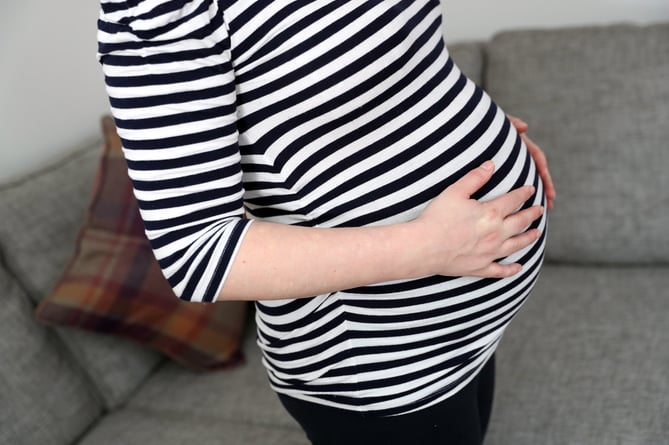Royal United Hospitals Bath had nearly a dozen fewer midwives in December than it did a year earlier, according to new figures.
The Royal College of Midwives has accused the Government of doing “far too little” to prevent what it calls a recruitment and retention crisis in the profession across England.
NHS Digital figures show the equivalent of 140.6 full-time midwives were working at Royal United Hospitals Bath NHS Foundation Trust in December 2021 — 11.1 fewer than 151.7 at the same point in 2020.
In 2019 there were the equivalent of 142.3 full-time midwives working for the trust.
Full-time equivalent measures the proportion of full-time hours an employee is contracted to work, meaning the figures are likely to be lower than the actual headcount of staff — some of whom may work part time.
Gill Walton, chief executive of the RCM, a trade union for midwives, warned: “England is still more than 2,000 midwives short of where we need to be and that simply isn’t good enough.
“While we welcome attempts to train and recruit new midwives, this Government is doing nothing to stop the experienced and qualified ones from leaving.
“At the same time as demands on services and the pressures on maternity staff are rising, staff numbers are going down. Despite the often-heroic work of midwives and others to try to plug the gaps, this is putting the quality of care and the safety of women and babies at risk.”
Across England, there were the equivalent of 337 fewer full-time midwives working for the NHS in December 2021 than at the same point in 2020.
It means there are now 22,192 full-time midwives working on maternity wards nationally.
The latest workforce figures came shortly after a major report into malpractice at the Shrewsbury and Telford Hospital NHS Trust, which found significant failings in its maternity services from 2000 to 2019, was published last week.
Some 201 babies could have survived had they been provided with better care, the inquiry found.
Maternity expert Donna Ockenden, who led the report, pointed to “significant staffing and training gaps” in the trust’s midwifery workforce.
Despite a drop in the number of midwives working for the NHS last year, the Nursing and Midwifery Council, a regulator for the profession, says that registrations for new midwives to the organisation have continued to rise over the last few years.
Almost 40,000 midwives eligible to practice in the UK were on its books as of September 2021.
The NMC did acknowledge that a “faster pace of growth is needed to meet rising demand” for midwifery services.
In March 2021, NHS England announced a recruitment drive for maternity staff, promising £95m to be spent on recruiting 1,200 midwives and 100 obstetricians.
A spokesperson for NHS England said: “We recognise that we have more to do to bolster our maternity workforce to ensure that we can provide the safest possible care for women and their babies.”
They said that NHS England is investing a further £127m into maternity services, most of which is earmarked for recruitment, leadership development and retention.
Will Grimond, Data Reporter


